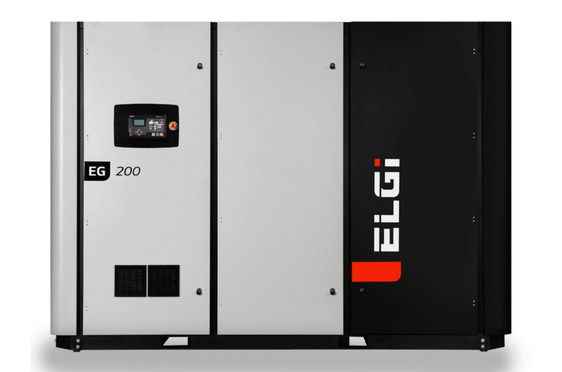So, your air compressor just called it quits. One minute it was chugging along like a champ, the next it sounded like a dying lawnmower or, worse, just gave you the silent treatment.
Now what?
Do you roll up your sleeves and try to revive it, or do you pull the plug and start shopping for a shiny new model?
This isn’t just a budget decision—it affects your productivity, downtime, and long-term efficiency. But don’t stress. We’re Omaha Pneumatic Equipment Company, and we’re here to help you figure it out without pushing you into a sale. This guide will walk you through the big question: Repair or replace?
Quick Diagnosis: What’s Going Wrong?
Before you panic or start browsing online listings, let’s get a grip on the symptoms.
Common issues:
- Strange noises or rattling: Could be something loose, misaligned, or on its way out.
- Overheating: That’s a red flag your compressor is working too hard or airflow is restricted.
- Sudden pressure drop: Likely a leak, a worn valve, or a filter problem.
- Failure to start: Electrical issue, bad capacitor, or motor trouble.
Quick checklist:
- Mechanical problems? Belts, valves, or moving parts gone rogue?
- Electrical problems? Wiring, pressure switch, motor failure?
- Maintenance slip-ups? Dirty filters, old oil, clogged lines?
When to call in a pro: If you’ve ruled out the obvious and it still sounds like it needs CPR, it’s time to bring in the experts. A certified technician can run diagnostics, pinpoint issues, and tell you what’s worth saving.
When You Should Repair Your Air Compressor
Repairs are your best move when:
- The problem is minor—like replacing a belt, pressure switch, filter, or unjamming a valve.
- Your unit is still within its warranty period or hasn’t hit its midlife crisis yet.
- The cost of repair is less than half the price of a new compressor.
- The parts are easy to get and don’t cost a fortune.
- The unit still meets your current workflow and CFM demands without complaint.
- You can be back up and running in no time with minimal downtime.
In other words, if the bones are still good and the fix is straightforward, don’t toss out a perfectly decent machine. A little care can go a long way.
When It’s Smarter to Replace Your Compressor
Sometimes you have to know when to walk away. If you’re nodding along to these, it might be time to upgrade:
- Frequent breakdowns are becoming a regular part of your week.
- Outdated equipment is eating up more energy and costing you more to operate.
- Replacement parts are a scavenger hunt or marked up beyond belief.
- It can’t keep up with your demand or you’re scaling up operations.
- Downtime is expensive, frustrating, and totally avoidable with a newer unit.
- Modern features like automation or smart monitoring would seriously improve your workflow.
Bottom line: If the repairs are stacking up or the machine is holding back your production, it’s probably time to let it go.
Cost Breakdown: Repair vs. Replacement
Let’s talk dollars. Here’s how repair stacks up against replacement:
| Repair | Replacement | |
|---|---|---|
| Upfront Cost | Lower (at first) | Higher |
| Long-Term Cost | Can increase with frequent issues | Often lower due to energy efficiency |
| Downtime | Shorter for small fixes | Potential delay during setup |
| Energy Use | Same as current unit | Improved efficiency = lower bills |
| Warranty | Limited coverage | Full new warranty = peace of mind |
Example: Spending $1,000 to fix a 12-year-old unit? That money might be better spent on a new, energy-efficient compressor that pays you back over time.
Don’t Forget These Hidden Factors
These often-overlooked things can make a big difference:
- Sizing: If your compressor isn’t sized right for your current operation, it’s either overworked or wasting energy.
- Compatibility: Will it still work with your tools, dryers, or accessories?
- Local codes or regulations: Newer compressors may be required for compliance.
- Rebates or financing: You might qualify for incentive programs that make new equipment a smart financial move.
Maintenance = Lifespan
Regular maintenance is your best defense against future headaches.
Checklist to keep your tank happy:
- Drain condensate daily
- Change air filters routinely
- Check oil and change it regularly
- Inspect for leaks and rust
- Test the pressure relief valve
Contract or DIY? Our maintenance contracts take the pressure off you. We check everything, log it, and help prevent issues before they happen.
Real-Life Scenarios
Case 1: The Affordable Fix A customer brought in a 4-year-old compressor with a burnt-out pressure switch and a squeaky belt. $300 and 24 hours later, it was back to full health and humming.
Case 2: Time to Upgrade A different customer had a 14-year-old tank that needed a new motor and two major components. Repairs were estimated at $1,500. We recommended a newer, energy-saving model. They got a rebate, lower bills, and less noise—plus the ROI kicked in before the year was over.
Repair or Replace? Ask Yourself These Questions
- How old is the compressor?
- Is the repair cost creeping toward half the price of a new one?
- Do you rely on consistent uptime?
- Is the current model energy-efficient?
- Can it handle increased demand if your business grows?
These answers will shine a light on the right path.
Make the Right Call with Expert Help
At Omaha Pneumatic, we believe in doing what’s right—not what’s most profitable. That means offering real advice, not pushing the latest model.
What a full system audit includes:
- Performance review
- Load and capacity analysis
- Diagnostic checkups
- Repair vs. replace recommendations
Whether it’s a quick fix or a full-on upgrade, we’ll help you make the smart move for your setup.
Key Takeaways
- Repair if the issue is minor and the compressor still meets your needs.
- Replace if repairs are frequent, costly, or your unit can’t keep up.
- Think long-term: energy use, downtime, and reliability matter.
- Don’t guess—call in a pro for a system evaluation.
Not sure what to do next?
Let’s make it easy.
- Book your system evaluation with Omaha Pneumatic Equipment Company today.
We’ll inspect your setup, give you the facts, and help you choose the right move—no pressure, just solutions.




